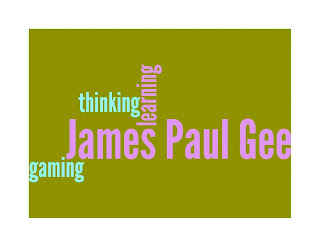Russian nesting dolls photo credit: Mollypop on Flickr Creative Commons
It's Monday after work, and I'm sitting in a Just One Hour PD session with Tanny McGregor and a great team of teachers. Hope she doesn't find my laptop notetaking a distraction while she's teaching. Today we're reviewing SYNTHESIS, in the Thinking Strategy Series. My notes:Tanny likes to explain synthesis to students using concrete examples. She used the simile of nesting dolls. "When you think of synthesizing, picture nesting dolls," she says. One idea within another. As students continue to change their thinking, their thinking develops and grows. The original thinking may be embedded and still existing, but the new thinking is larger and different.
And Daniel Pink in A Whole New Mind uses the metaphor symphony. He writes, "Symphony...is the ability to put together the pieces. It is the capacity to synthesize rather than to analyze; to see relationships between seemingly unrelated fields; to detect broad patterns rather than to deliver specific answers; and to invent something new by combining elements nobody else thought to pair."
Love this quotation from Tanny: "Meet new information and change your mind."
Tanny tells about asking Steph Harvey to define synthesis. She shared Steph's defining sentence stem:
I used to think __________, but now I think _____________.
Debbie Miller used Thinking Quadrants when modeling synthesis for our primary teachers:
1. Right now I'm thinking...
2. And now I'm thinking...
3. And now I'm thinking...
4. Now that I'm finished, I think...
Each stem falls in a quadrant of a graphic organizer. Nothing fancy, Tanny says, just fold a piece of paper in fourths. Each quadrant captures student thinking before-during-after reading. "I really like the idea of the four square model for working with my English Language Learners," ESL teacher Rachel tells me.
Tanny shared a turn and talk strategy from Kylene Beers that helps student synthesize their thinking after reading text (fiction or non-fiction). Beers calls it "Say Something." Here are the rules:
1. With your partner, decide who will say something first.
2. When you say something, do one or more of the following: make a prediction, ask a question, clarify something you misunderstood, make a comment, or make a connection.
3. If you can't do one of those five things, then you need to reread.
We talked about and practiced genre reformulation. That is, take what you've read and turn it into something else. Options: lyrics with a familiar tune, a graphic representation (logo, sketch), an alphabet list, a pattern book structure (like Brown Bear, Brown Bear or The Important Book).
Tanny shared a six-word-synthesis idea adapted from Smith Magazine's six-word memoirs. Amy K shared that she had used the six-word-synthesis strategy as an exit ticket for her middle school students. The six-word-synthesis is a great way for teachers to check for understanding.
Finally, we worked with partners and shared our own synthesis of the book Fox, by Margaret Wild and Ron Brooks. (This children's book is so beautiful and its story so profound I think I'm going to recommend it for my turn at book club.)
My six-word-synthesis of this Just One Hour:
"Not literary analysis. Literary thinking. Anew."
Miss the session? Our next Just One Hour in the Thinking Strategies Series is November 30 on schema and inferring.
M.E.
PS Here's the handout:






